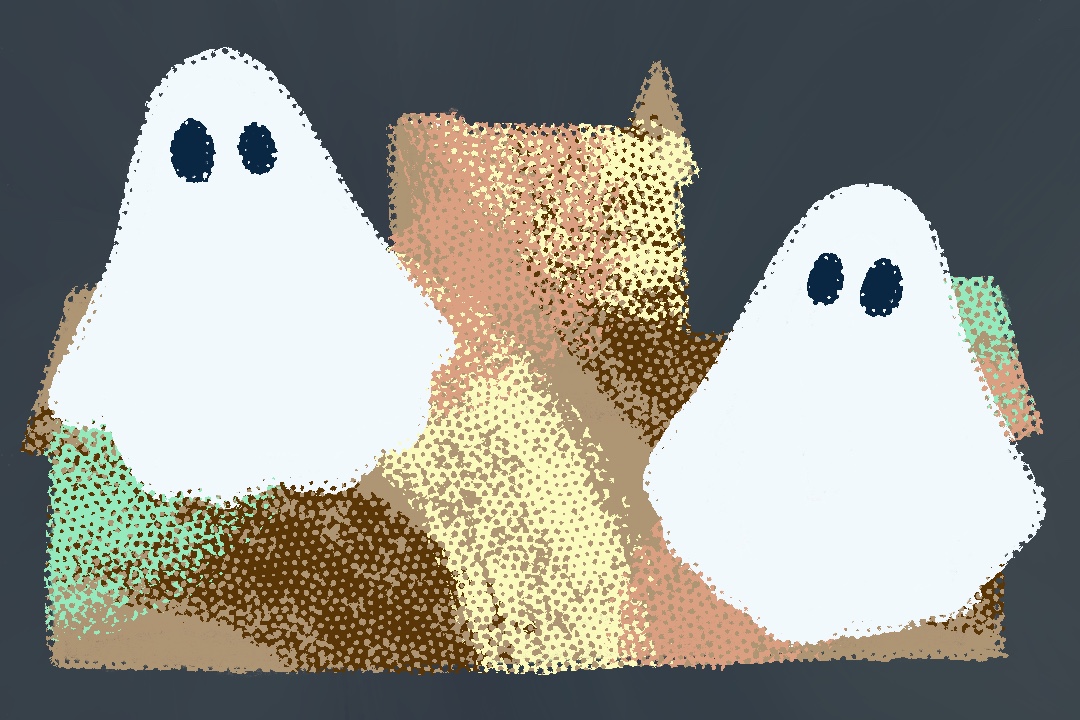A core memory of mine is the first Halloween party I ever went to. In my first year of university, my friends and I decided to dress up and go to a frat house on Halloweekend. I was excited to dress up as a Black ’90s disco diva. Finally, the inner child that was robbed of afro wigs and flared jeans his whole life was going to be fed.
Beneath the childish anticipation, ghoulish decor, and the promise of reckless abandon, I had never been a fan of frat parties. Still, one of my friends was celebrating their birthday, a few others were on the prowl for mates, others wanted to drink until they dropped — and I was the fresh victim of a failed situationship. My friends outnumbered me, so I surrendered to their plans with hope for the best.
As the night unfolded, I watched a screaming Cher from Clueless get dragged out of a mosh pit with a leg that looked broken; I saw a Peter Pan who lost the pirate of his dreams to a corseted pink bunny sob beneath the soft red light; and I witnessed a vampire and a fairy who will never speak of that night again and what it ignited between them. And I, the lone disco diva, will never forget how I watched the world transform under the power of masks, wings, and makeup to become a new thing — a wilder, bigger, freer, truer version of real life.
The origin of Halloween traces back to the ancient Celtic tradition of Samhain, meaning “summer’s end.” Practiced some two thousand years ago, this practice involved people dressing up in animal skins to drive away malicious spirits and devils from amongst them. Trick-or-treating, too, traces its roots back to the Celtic practice of mumming, where peasants dressed as goblins and performed a trick in exchange for money or food. Over the centuries, the tradition has gained traction and become a global cultural phenomenon. This year alone, the United States is projected to generate about $12.2 billion of spending for Halloween costumes.
From the costumes and candies to the scary movies and bizarre parties, I think our obsession with Halloween comes from our desire to escape the confines of reality and convention, and to reckon with our deepest fears, anxieties, and desires. In North America and across the world — as they did in ancient Celtic society — people are coming together to celebrate as much as to confront their alter egos. Where the Celts cast out demons and evil spirits from their communities and homes, people today don the Halloween mask to come to terms with who they are.
Behind a costume, we are made new. Nobody knows us, and by the power of anonymity, we can live by our own rules. We can be as weird as we want to be and still be socially accepted and celebrated. From inside the Michael Myers mask holes and under that orange Chucky wig, we can connect with our fear of death. As witches and vampires, we can play with the supernatural and believe in magic as children do. At haunted houses and themed tours, we can expose ourselves to our deepest fears within our comfort zones. In this, there is joy and the understanding that perhaps nothing is ever as scary as it seems and that we, too, can wear the face of fear and make our enemies tremble.
The fact of sex also comes alive on Halloween. This is the only time of the year when we are allowed to embody the full spectrum of desire by embracing fantasy and taboo. I believe that to slut-shame anyone at Halloween is to be an enemy of progress and a hater of fun. Under the guises of leathery catwomen, jockstrapped sailors, guiltlessly exposed schoolgirls, and shirtless Mario brothers, we are no longer who we are, and so we can become who we truly are.
For some, this can be liberating, as it lifts the pressure to portray innocence and demureness. In other ways, though, this liberation may empower those who wish to do harm: the relief of gender euphoria and sexual freedom exists alongside the unfortunate fact that the risk of sexual assault against women, girls, and gender-diverse people increases around Halloween.
As I write this article, I am compiling items for my costume magnum opus of the season. A pair of black flared pants. A stringy top with spaghetti straps. A nun’s habit and collar. Pointed-toe boots, black with the woven pattern of a signature Bottega piece. Perhaps a pair of black gloves and a black lace flower mask. A long pleated plaid skirt — let’s pretend it’s Vivienne Westwood. I want to be funny and sad; not scary, exactly, but fearsome; sexy, and empowered with abandon; and very, very dark.
I would like to think that I am making these choices in a vacuum, outside of my personal relationship to my religious upbringing, my understanding of my body and its performance of gender, or my aching desire to be everything that I feel I am not. I want to be myself at my most visceral, without the judgment of the public, the violence of the male gaze, or the weight of expectation from my family, work, and personal life. Every year, we’ve got one shot to do that, and we need to make it count.
Divine Angubua is a third-year student at UTM studying history, political science, and creative writing. He is the editor-in-chief of With Caffeine and Careful Thought and a staff writer at The Medium. He is the associate comment editor of The Varsity.



No comments to display.